Overhead cranes are the backbone of modern industry. From lifting automotive parts to transporting thousands of pounds of raw materials, these systems keep operations running across various business sectors. Selecting the right type of overhead crane is essential for maximizing productivity, safety, and efficiency.
This article outlines the primary types of overhead cranes and highlights key features, benefits, and ideal applications for each.
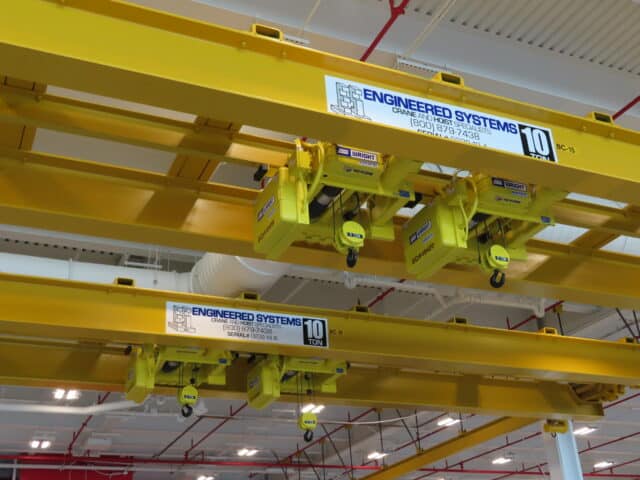
Bridge cranes are the most commonly used overhead crane system in industrial environments. Known for their reliability and high lifting capabilities, these cranes are designed to handle a wide range of lifting requirements in indoor facilities such as manufacturing plants, warehouses, and distribution centers.
Bridge cranes operate on two parallel runways supported by stationary columns. The runways are spanned by a horizontal beam, either a single or double girder, which supports a trolley and hoist traveling side-to-side. The entire bridge structure can travel forward and backward along the runways to provide full coverage of a work area.
Bridge cranes are used for both light-duty and heavy-duty applications and are well-suited for facilities that require consistent, overhead lifting without floor-level obstructions.
Single Girder Bridge Cranes
Single girder bridge cranes use one I-beam to support the hoist and trolley, and the end of the bridge is supported by an end truck. This design is lighter, more compact, and typically used for lifting capacities up to 10-15-tons. Single girder systems are most commonly underhung, which means that the hoist travels along the bottom flange of the girder. This design is used for lighter loads and helps maximize floor space by minimizing structural footprint.
Compared to a double girder crane system, single girders are less expensive, quicker to install, and are designed for lower capacity requirements.
Double Girder Bridge Cranes
Double girder bridge cranes use two parallel I-beams, or girders, allowing the hoist and trolley to travel on the top of the bridge. This design supports higher lifting capacities, often exceeding 15 tons, and enables longer spans.
Double girder cranes are preferred for heavy duty applications and environments where additional features are required such as walkways, magnet cable reels, lights, and other customizations.
2. Gantry Cranes
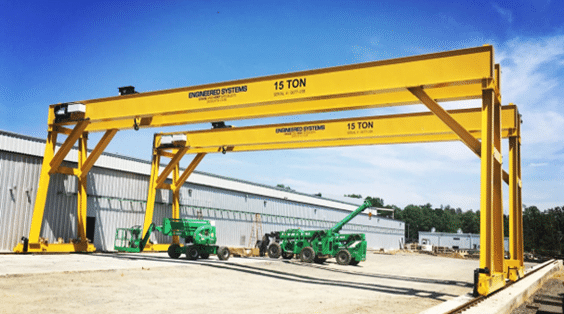
Gantry cranes function similarly to bridge cranes, however, instead of relying on ceiling-mounted runway systems, gantry cranes are supported by freestanding legs. This self-supporting design makes gantry cranes a flexible solution for both indoor and outdoor lifting applications.
Gantry cranes are commonly used in environments where overhead space is limited, such as shipyards, railyards, steel mills, and construction sites. They can also be effective in indoor spaces with occasional lifting needs, such as auto body shops and maintenance facilities.
These systems are available in a wide range of sizes and configurations.
-
- Adjustable Gantry Cranes: Used in warehouses and workshops where materials need to be moved in areas with limited clearance, including aisles, doorways, and other areas with physical barriers. Common in welding, fabrication, and general manufacturing environments.
-
- Portable Gantry Cranes: Used in plant maintenance settings for lifting, relocating, or installing equipment and machinery. These systems are mounted on wheels or casters for easy transportation within or between facilities.
-
- Track-Mounted Gantry Cranes: Used in applications that require consistent lifting along a defined route. These cranes operate manually or through a motorized drive system and are built to handle heavier loads with precision and control.
3. Monorail Cranes
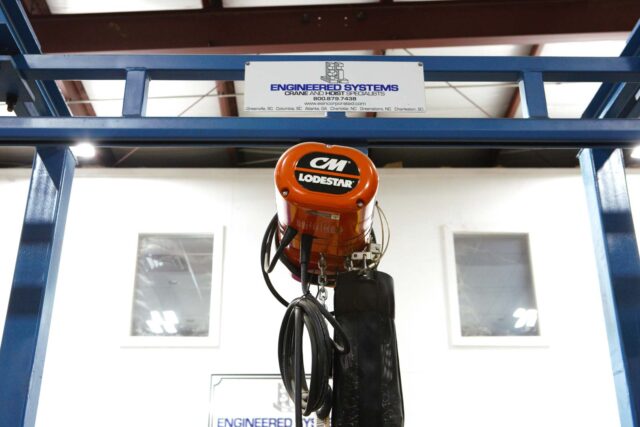
Monorail cranes are designed for linear material handling along a fixed path. The trolley and hoist are attached to an I-beam and travel along the bottom flange of the beam. These systems are best for production and assembly lines where materials need to be moved between workstations or through a defined process. The hoist travels vertically while the trolley moves horizontally along the beam which leads to efficient, repeated lifting without the need for a full overhead bridge system.
While monorail cranes typically move in a straight line, the rail can also be engineered to include curves, switches, and elevation changes. This allows for greater flexibility in facilities and creates a mobility advantage.
4. Jib Cranes
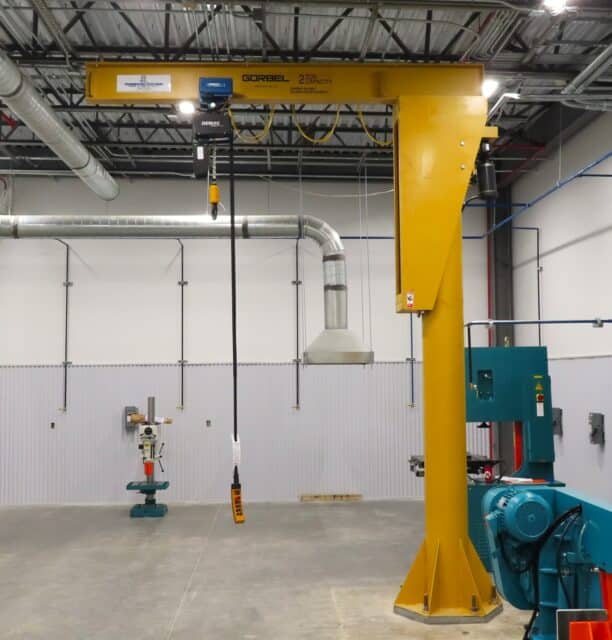
Jib cranes offer manual rotation ranging from 180-360 degrees and are often used to supplement larger crane systems. These cranes are available in floor-mounted, wall-mounted, and articulating designs, and are well-suited for spaces with limited clearance or minimal structural support.
These systems do not require runways or track systems and can be freestanding or column-mounted, offering a range of lifting capacities, heights, and reach ranches. Jib cranes offer a compact, economic solution for repetitive lifting over short distances.
5. Workstation Cranes
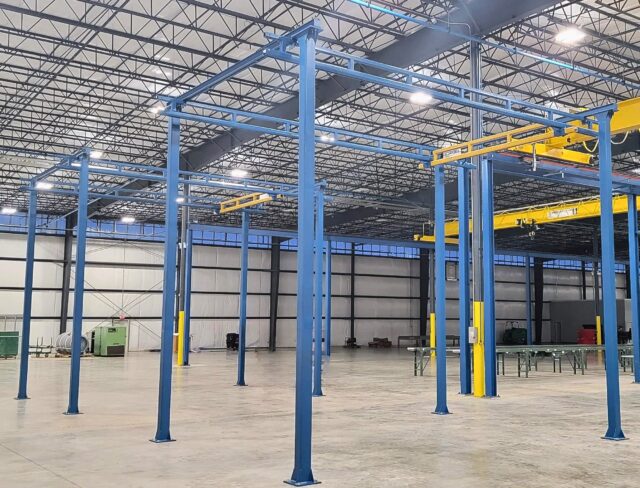
Workstation cranes are designed for lighter duty applications and repetitive material handling tasks. These systems can be freestanding or ceiling-hung, which makes them versatile solutions for production areas, assembly operations, and packaging lines.
Workstation cranes are engineered for efficiency as they improve safety, reduce operator strain, and support consistent workflow. Capacities typically range from 150 lbs. to 2 tons. Their ergonomic design allows smooth load movement with minimal effort in compact and confined spaces. Since workstation cranes can use a modular design, there is able to be quicker installation and easy reconfiguration without additional support.
Selecting the right overhead crane depends on the lifting capacity, lifting frequency, hoist requirements, hook height, support structure, and the operating environment. At Engineered Systems, we bring over 55-years of expertise in crane design, fabrication, and installation.
Contact us to find the right crane for your facility and to help you with all your lifting needs.

